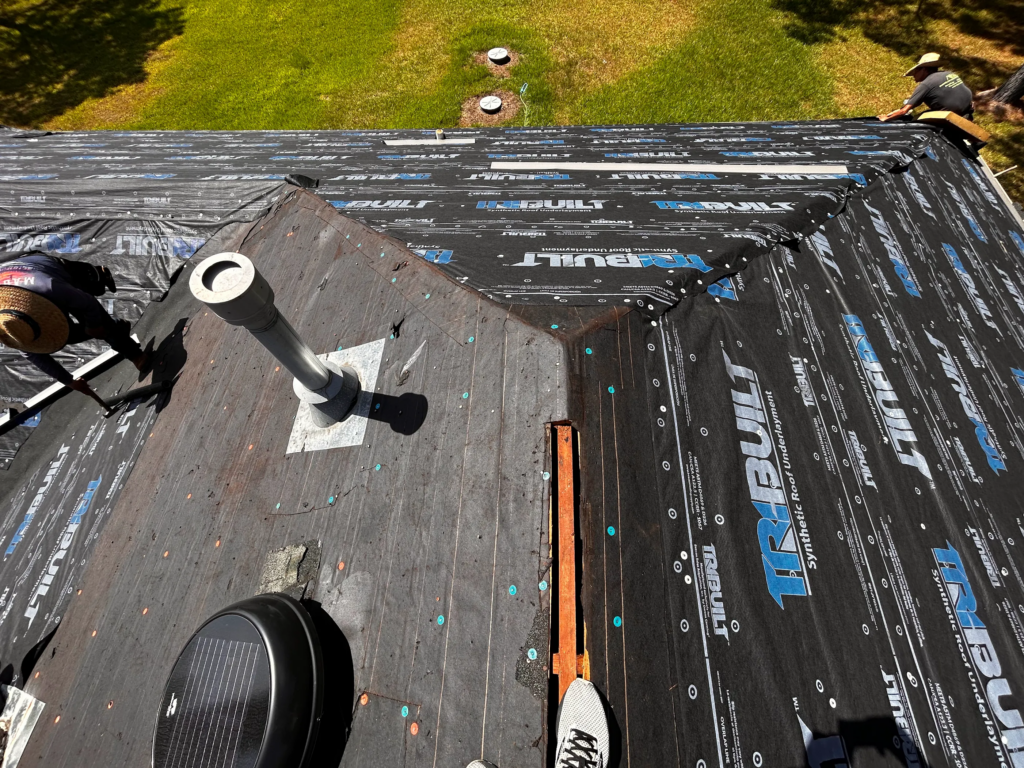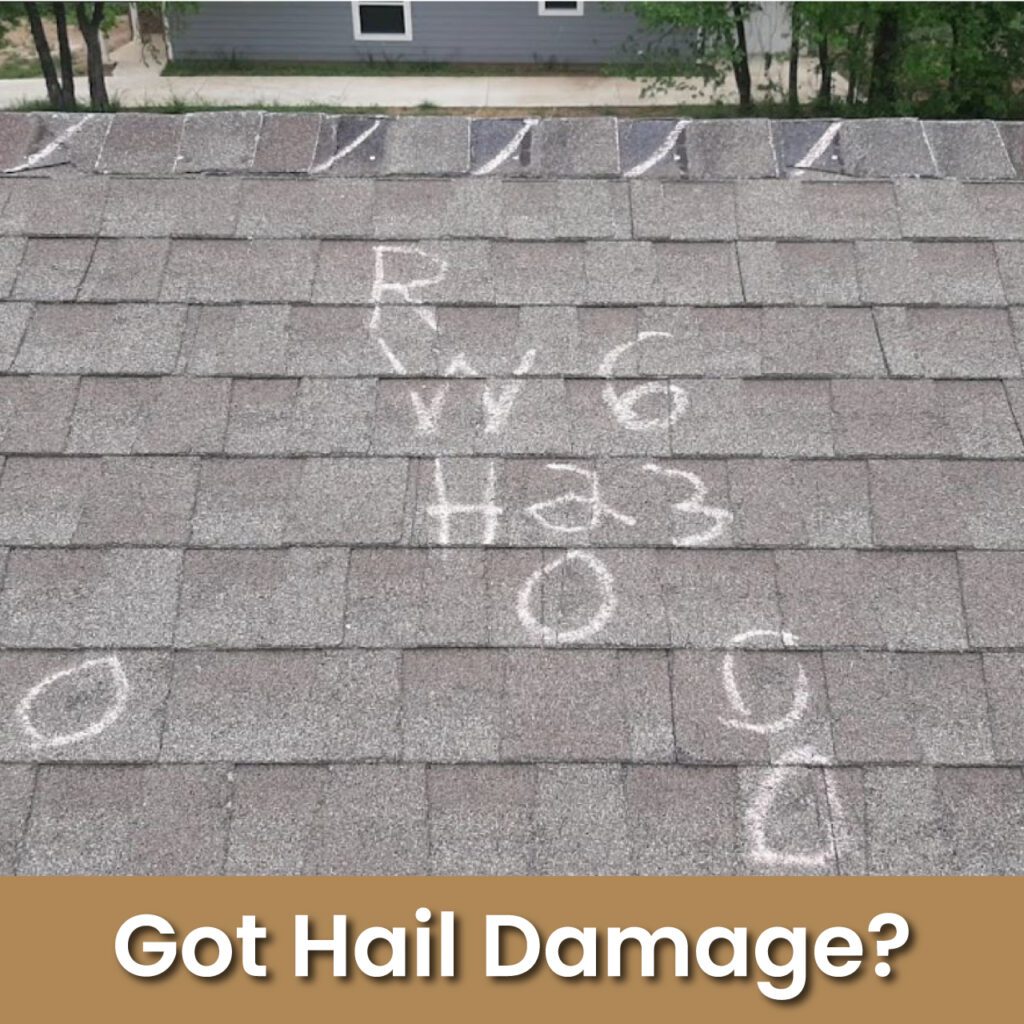We understand the importance of a sturdy roof. As a leading roofing contractor, we've seen the devastating effects of storms on roofs. That's why we want to bring your attention to the signs of storm damage.
Your roof is your first line of defense against the elements, but damage may not be immediately apparent. In this article, we'll discuss common signs, such as missing shingles and leaks.
By recognizing these indicators early on, you can prevent further damage. Stay tuned for our helpful tips and advice.
At Dutchmark Roofing, we've seen firsthand the impact of storms on roofs. One of the most common signs of storm damage is missing or damaged shingles. Proper roof maintenance is essential in preventing shingle damage caused by severe weather conditions. Regular inspections and prompt repairs are crucial to ensure the longevity and durability of your roof.
If you notice any missing or damaged shingles after a storm, it's important to address them promptly to prevent further damage, such as leaks and structural issues. Identifying storm damage early can save you from costly repairs down the line. That's why we emphasize the importance of professional roof inspections.
Experienced roofing contractors can assess the extent of the damage and provide the necessary repairs or replacements to keep your roof in optimal condition.
After a storm, one of the signs that Dutchmark Roofing often looks for to determine storm damage to a roof is the presence of leaks or water stains on the ceiling. Leaks or water stains on the ceiling are clear indications that your roof has been compromised by the storm.
The causes of these leaks or stains can vary, but common culprits include damaged or missing shingles, clogged gutters, or improper installation.
To prevent leaks or water stains on your ceiling, it's important to regularly inspect your roof for any signs of damage and address them promptly. If you notice leaks or water stains, it's crucial to repair them as soon as possible to prevent further damage to your roof and the interior of your home.
In cases of significant storm damage, it's advisable to contact a professional roofing contractor, like Dutchmark Roofing, for a thorough inspection and assistance with insurance claims.
When assessing storm damage to your roof, Dutchmark Roofing looks for dents or cracks in the roof, as they can be indicative of the severity of the impact. If you notice any dents or cracks on your roof, it's important to address them promptly to prevent further damage.
Depending on the extent of the damage, there are different repair options available. For minor dents or cracks, you may be able to fix them yourself with DIY fixes such as filling them with roofing cement. However, for more significant damage, it's recommended to seek a professional inspection and consider filing an insurance claim.
In addition to repairs, taking preventive measures such as regular roof inspections and maintenance can help minimize the risk of future storm damage.

One common sign of storm damage to your roof that Dutchmark Roofing looks for is dislodged or bent flashing. Flashing is the metal material installed around chimneys, vents, and other roof openings to prevent water from seeping inside. During a storm, strong winds and heavy rain can cause the flashing to become dislodged or bent, compromising its effectiveness.
Common causes of dislodged or bent flashing include hail, fallen debris, and extreme temperature changes. It's important to address this issue promptly to prevent water damage and potential leaks. Repair options for dislodged or bent flashing include resealing or replacing the damaged sections.
Regular inspections by a professional roofing contractor, like Dutchmark Roofing, are crucial to identify and address any storm damage promptly and effectively. DIY repairs aren't recommended as they may not provide a long-lasting solution, and it's best to hire a professional for the job.
Additionally, it's important to check if your insurance coverage includes storm damage to your roof.
Another sign of storm damage that we at Dutchmark Roofing look for is granule loss on shingles. When a storm hits, the impact of hail or strong winds can cause the granules on your shingles to become dislodged, leaving bare spots. This granule loss weakens the shingles and exposes them to further damage from UV rays and water.
The causes of granule loss can vary, but common factors include age, poor installation, and severe weather conditions. To prevent granule loss, it's essential to have a professional inspection to identify any issues before they worsen.
If you notice granule loss on your shingles, it's crucial to take immediate action. Repair options may include replacing individual shingles or, in severe cases, replacing the entire roof. It's important to review your insurance coverage to determine if granule loss is covered under your policy.
At Dutchmark Roofing, we also look for signs of sagging or an uneven roofline as potential indicators of storm damage. A sagging or uneven roofline can be a sign of serious structural issues caused by the impact of a storm. It's important to address this issue promptly to ensure the safety and structural integrity of your roof.
Regular roof maintenance and professional inspections are essential for identifying and addressing any potential problems. If you notice sagging or an uneven roofline, it's crucial to consult a professional roofing contractor who can assess the damage and provide you with appropriate roof repair options.
Taking preventive measures and addressing any issues promptly can help prevent further damage and ensure the longevity of your roof.
We typically look for a significant number of debris or tree damage as a clear indication of storm damage to your roof. Debris such as branches, leaves, and other materials can be blown onto your roof during a storm, causing damage to the shingles, gutters, or even the underlying structure. This type of damage can lead to leaks, water infiltration, and further deterioration of your roof if not addressed promptly.
It's important to take preventive measures by trimming trees near your home and securing loose objects in your yard to minimize the risk of debris damage. Additionally, it's crucial to have insurance coverage that includes storm damage and to choose the right roofing contractor for any necessary repairs.
Regular roof inspections are also essential to identify and address any potential issues before they worsen.

How can we determine if a storm has caused hail damage to your roof?
When assessing the extent of damage, it's important to look for certain signs. Hail damage can result in dents or cracks on your roof shingles, as well as granule loss. If you notice these signs, it's crucial to take immediate action.
First, check your insurance coverage to determine if hail damage is included. If it is, contact your insurance provider to begin the claims process.
Next, consider your repair options. Depending on the severity of the damage, you may need to repair or replace your roof. To prevent future hail damage, make sure to schedule regular preventive maintenance.
Lastly, hiring a professional roofer like Dutchmark Roofing can ensure a thorough assessment and expert repairs.
"We can differentiate between storm damage and normal wear and tear on your roof through a professional assessment and a thorough roof inspection. By identifying storm-related damage and documenting the roof condition, we can then proceed with repairing any storm damage."
Warning signs of storm damage to your roof include missing or damaged shingles, leaks, cracks, and dents. Regular roof inspections and professional assessments can help identify hidden damage. Promptly addressing these issues is crucial for insurance claims and taking preventive measures.
Yes, storm damage to your roof can indeed affect the structural integrity of your home. It's crucial to get a professional assessment through a roof inspection, and if needed, proceed with roof repair and file an insurance claim.
After a storm, we recommend performing preventative measures to prevent further damage to your roof. Conduct a roof inspection, make any necessary emergency repairs, and maintain regular roof maintenance. It's also beneficial to seek a professional assessment.
Storm damage to your roof typically qualifies for insurance coverage. At Dutchmark Roofing, we recommend regular roof maintenance to prevent further damage. Be aware of hidden signs of roof damage and contact us for expert assistance.
In conclusion, recognizing the signs of storm damage to your roof is crucial in order to address the issues promptly and prevent further damage. By being aware of missing or damaged shingles, leaks, dents or cracks, dislodged flashing, granule loss, a sagging roofline, debris or tree damage, and signs of hail damage, you can take necessary steps to protect your property.
At Dutchmark Roofing, we're here to provide you with the knowledge and expertise to keep your roof sturdy and reliable. Factors affecting roof longevity include the quality of the materials used, the skill of the installation, and regular maintenance. Our team is dedicated to paying attention to every detail and ensuring that your roof is built to last. We understand the importance of a strong and long-lasting roof, and we are committed to providing the best possible service to meet your roofing needs. Factors affecting roof longevity also include environmental factors such as climate and exposure to elements like sunlight and moisture. At Dutchmark Roofing, we take these factors into consideration when advising on the best materials and maintenance for your specific situation. For example, the lifespan of thatched roofs can vary greatly depending on these environmental factors and the quality of the thatching material used. Our team will work with you to ensure that your roof is built to withstand these challenges and last for years to come.